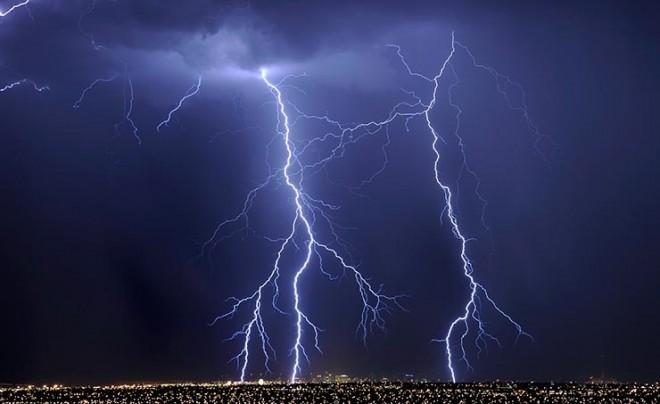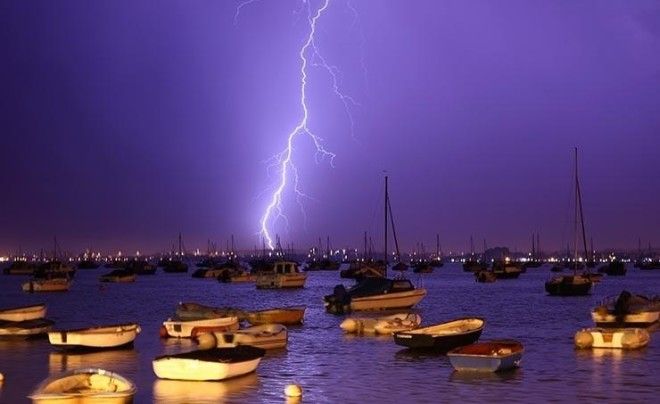
Lightning over a harbor in Poole, England.
Sure, we all know that lightning is just an electrostatic discharge that occurs during a storm. But what the eff does that even mean? Let's break it down. During a storm, the water molecules inside a cloud are moving around super rapidly. As a result, electrostatic charges build in the cloud, with the negative charges forming at the bottom.
Those negative charges then attract positive charges from surrounding objects — trees! buildings! people! the ocean! And when those opposite charges build up and build UP AND BUILD UP enough of an attraction ... BAM! Lightning strikes.
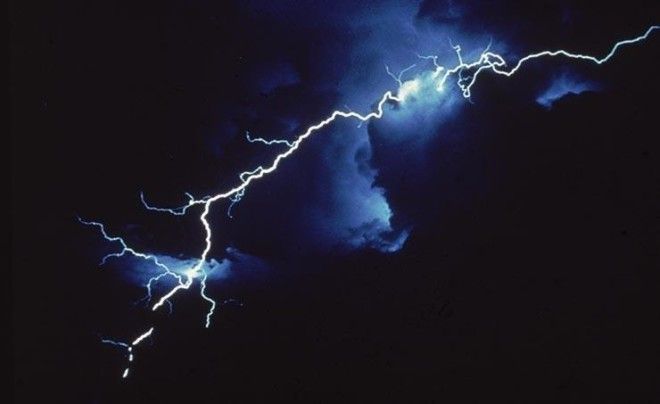
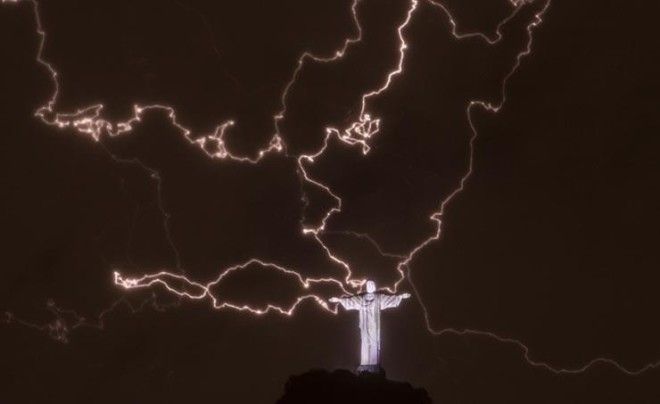
Lightning in Rio de Janeiro.
So for the sheer sake of lightning's coolness, here are five neat things you may not have known:1) Y'know that counting trick to calculate how far away lightning is? Yeah, it actually works. According to NASA, because light and sound travel at relatively constant (but different) rates, you actually can pretty easily estimate how far away lightning is.
First, count the seconds between when you see the lightning strike and when you hear the associated thunder. Second, divide that number by
five. That number, in miles, is approximately how far away the lightning is. Who knew that trick actually worked!? Keep that one in your back pocket for your next thunderstorm.
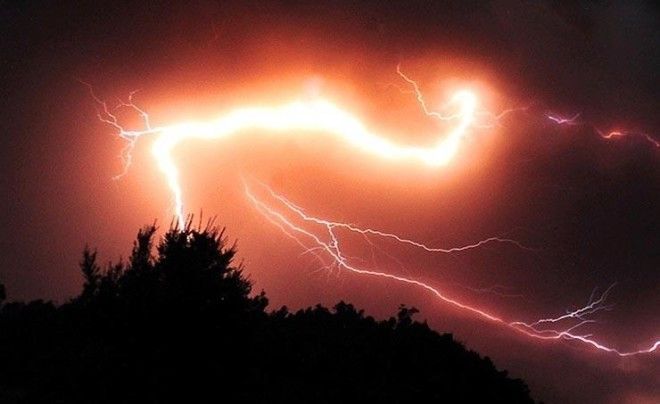
Lightning is seen amid a cloud of ash billowing from Puyehue volcano near Osorno in southern Chile.
2) Lightning never strikes the same place twice? MYTH.
NOPE. Just nope. Lightning often strikes the same place twice. The Empire State Building gets struck by lightning an average of 25 times per year.
It's not that lightning is more attracted to a place it has struck before, really. It's just that lightning is like, "HEY, BIG POINTY THING!" strike! ... "HEY, BIG POINTY THING!" strike! ... you get the picture.
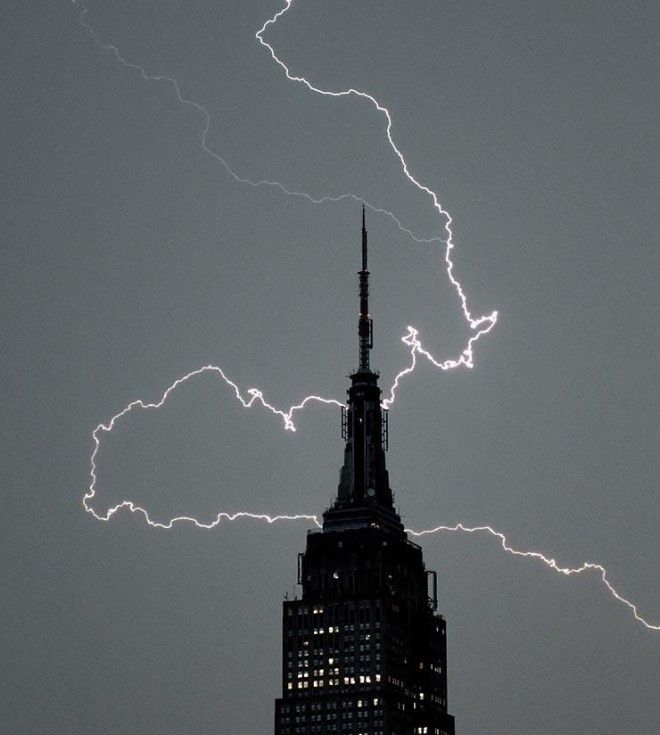
Lightning strikes near the Empire State Building in New York City.
3) Ever hear that if you touch someone struck by lightning, you'll be electrocuted? That's a myth, too. Also wrong — humans just don't store electricity like that. So if you see someone get struck by lightning, help them! You certainly will not be electrocuted through them.
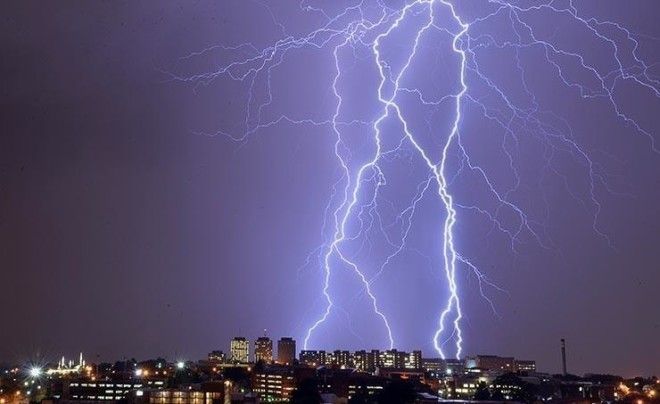
Lightning strikes over Johannesburg.
4) If you get stuck in a lightning storm: Just keep moving to find shelter. You may have heard that you should lay on the ground in a lightning storm. Don't! That will actually increase your chances of getting harmed by a ground current (which is the current that disperses out from a lightning strike along the Earth's surface).
Just keep moving to find shelter — and no, a tree is not shelter. Standing under trees is a super common way to get injured in a storm.
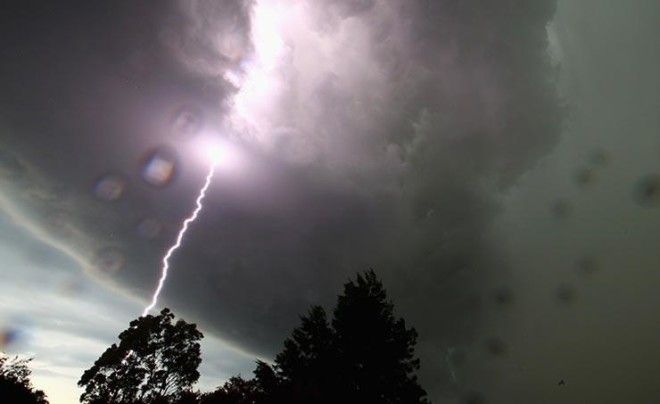
Lightning over Sydney.
5) You can see lightning from space. FROM. SPACE.
Well, maybe YOU can't unless you're a badass astronaut like Terry W. Virts. He took this amazing video of India. From space.
So there ya have it. Lightning: powerful, fast, dangerous, and unbelievably awesome.
